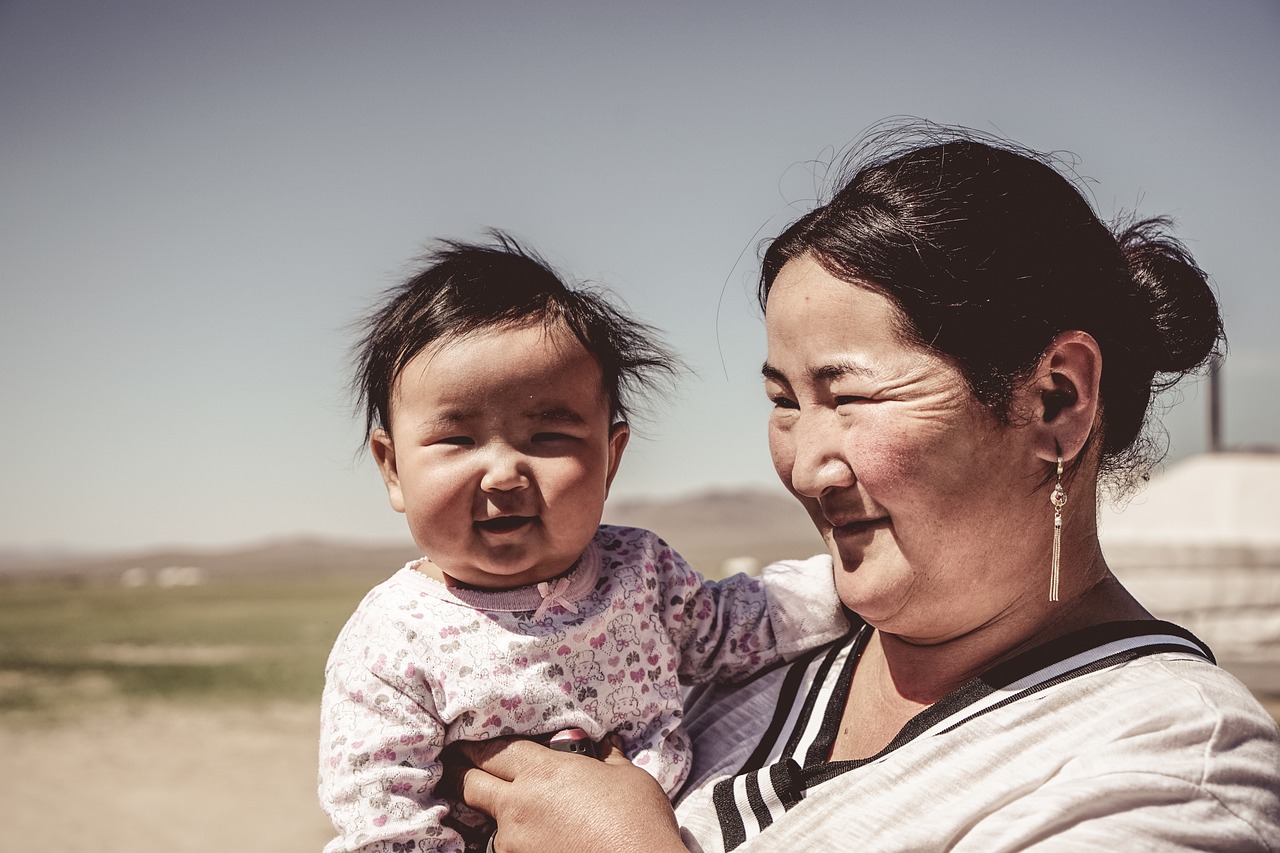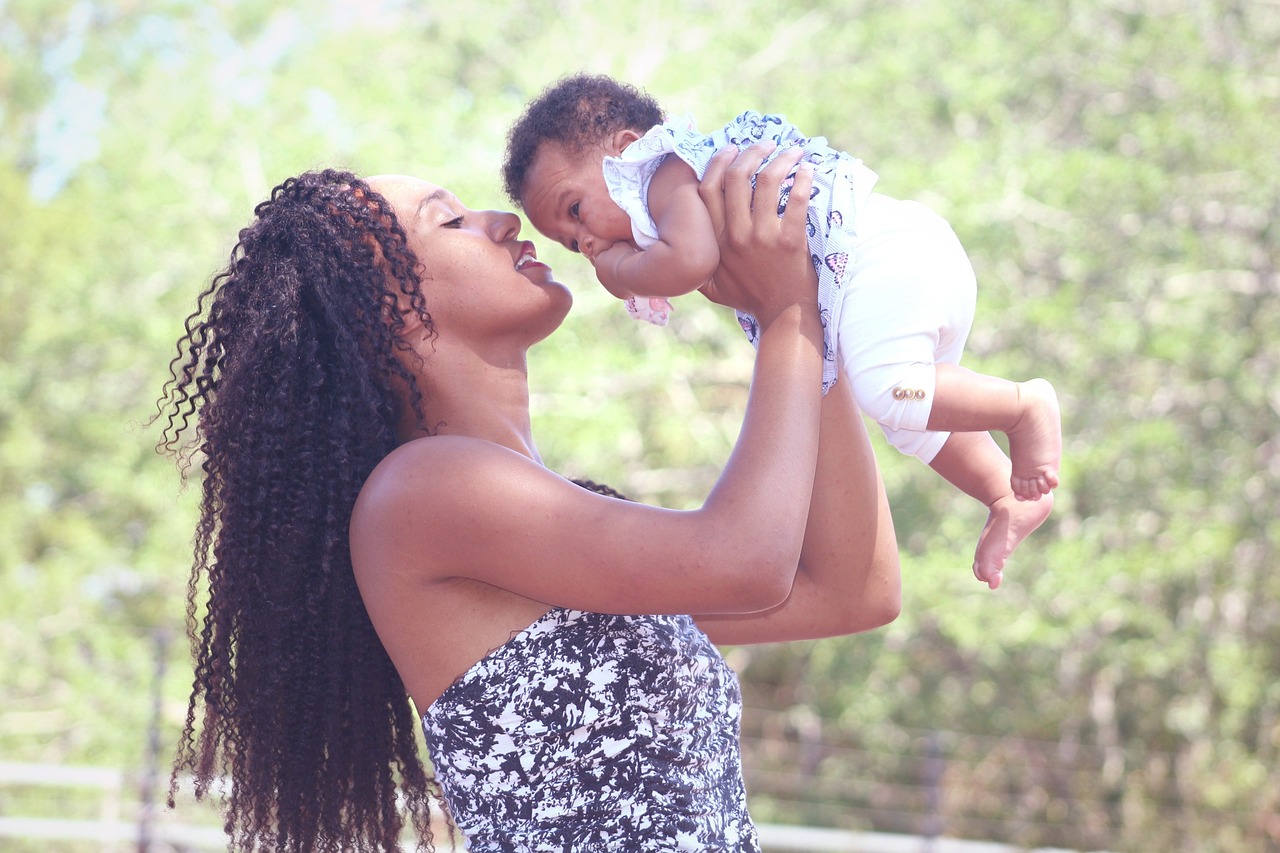Mothering

Abigail L. Palko is the Director of the University of Virginia Maxine Platzer Lynn Women’s Center, where she leads a dedicated team of experts providing educational opportunities as well as counseling and wellness resources on Grounds. The Women’s Center's welcoming space and supportive services are designed to help students make the most of their time at UVA regardless of gender identity. The Women's Center also hosts educational programming and guest lectures, free and open to the whole University community.
Everyone has a mother. Not everyone will be a mother. The infinite variety and messiness of being human means that those 10 words are both as simple as they appear and as complex a tangle of realities as any other elemental facet of humanness.
 What makes a good mother? How do we define a bad mother? How does culture shape mothering practices? How do mothering practices shape culture? How does race influence how we view mothers and their mothering practices? How does race impact how we invest in and support mothers? Motherhood is one of those roles that assumes almost-outsized cultural importance in the significance we force it to bear. It becomes both the source of and the repository for all kinds of cultural fears. Its ubiquity, perhaps, is what makes motherhood this perfect foil and scapegoat.
What makes a good mother? How do we define a bad mother? How does culture shape mothering practices? How do mothering practices shape culture? How does race influence how we view mothers and their mothering practices? How does race impact how we invest in and support mothers? Motherhood is one of those roles that assumes almost-outsized cultural importance in the significance we force it to bear. It becomes both the source of and the repository for all kinds of cultural fears. Its ubiquity, perhaps, is what makes motherhood this perfect foil and scapegoat.
The field of motherhood studies offers a pair of definitions that shape my reflections on these questions:
Mother: I follow Sara Ruddick’s lead in thinking about “mother” as a role that anyone can fulfill, regardless of gender identity or biological sex, dependent on an ethical commitment to meeting the fundamental demands of the child: preservation, growth, and social acceptability.
Mothering (motherhood as) practice: Adrienne Rich distinguishes between the institution of motherhood (the social, cultural, religious, and political messages and policies that enforce particular ideologies of the “right” way to mother) and the practice of mothering (women’s own lived experiences of mothering their child(ren)).

I teach a course called The Politics of Motherhood. We start with an essay by Michelle Singletary about her grandmother’s great-grandmother, Ms. Leah Drumwright. Singletary shares this family story:
"Leah, who was caring for her own infant, was forced to nurse the baby of the white woman who owned her. And there was one strict rule. She could nurse her Black baby only on her right breast. Leah’s left breast was reserved for the white baby. The reason she was given was that the left breast is closer to the heart, making the milk healthier, and the best milk had to be given to the white infant."
We identify and sit with the painful truths this story spotlights about the ways that mothering – and caregiving more broadly – has been racialized since the founding of our country. One of the pernicious legacies of slavery in the U.S. is how the plantation system built on Virginia’s 1662 matrilineal servitude statute grotesquely deformed notions of the family. Steven Martinot explains the law’s impact: it defined Black motherhood as economic production and white motherhood as cultural production. As a country, we have never understood caregiving as a public good that we need to invest in because “in slavery, the slaves took care of the kids. It was not something anyone paid for,” Tina Tchen argues. This attitude endures in the ways that we underpay caregivers and devalue their work as “unskilled:” it persists in the ways that we as a country and society continue to fail to support mothers, with the pandemic just the latest in a long line of examples. Jessica Calarco puts it bluntly: “Other countries have social safety nets. The U.S. has women. […] The pandemic came along and ripped a giant hole through what little safety net we did have to support women and especially mothers in the U.S.” Covid exposed many of the inequities of institutionalized motherhood and our collective failure to sustain communal interest in the well-being of children.
Rebecca Kukla highlights a tendency to assess motherhood by only a set of moments that have been culturally coded as emblematic tests of one’s mothering abilities rather than measuring it by the extended narratives through which it unfolds. The reproductive justice movement reframes the task of mothering with the expansive understanding we need. Loretta Ross lists the three primary values of the Reproductive Justice approach: “(1) the right not to have a child; (2) the right to have a child; and (3) the right to parent children in safe and healthy environments free from state, corporate, and individual violence.” The final value is the most crucial one.
Trying to disentangle institutionalized motherhood from mothering practices can feel like tracing your finger along a Mobius strip: on one side, systemic inequalities are perpetuated and reinforced through idealized norms of the “good mother.” Think about the ways that images of “good” mothers are deployed to political ends, of ways that a label like “welfare mother” policies the mothering practices of women who do not fit the stereotypical ideal: poor mothers, mothers of color, too-young mothers, all the mothers whose maternal identity we feel compelled to diminish through an adjective. On the other side, which is also the same side, systemic inequalities perpetuate and reinforce idealized norms of the “good mother.” Think about how cultural messages reinforce expectations and boundaries of “acceptable” mothering practices.
Consider a recent campaign ad for an example of how motherhood is deployed politically and how norms are reinforced. The ad features a woman talking about her son’s experience reading a book assigned for his high school English class: the script focuses on her (white) motherhood the entire time, never naming the book, Toni Morrison’s Beloved – nor acknowledging either Morrison’s (Black) motherhood or the ways that motherhood and the questions of what a mother owes her children or how she is to mother in circumstances of extreme duress form the very heart of the novel. The script suggests a good mother protects her child from an assignment she fears will harm him. The enslaved Black mother who acts to save her child from slavery and the Black mother who wrote the story she needed to read are both erased.
But those erased stories continue to reverberate today: Deidre Cooper Owens and Sharla M. Fett trace the ways that obstetrics and gynecology as a field advanced at the expense of enslaved Black women and connect this history to the significantly higher rates of maternal and infant mortality that harm Black mothers and children. And yet, making another loop around that Mobius strip, mothers (going back to Ruddick’s definition) also hold responsibility for ensuring the social acceptability of their children. For too, too long, this has meant that mothers of color have had to raise their children to fit into dominant norms to preserve their lives, and for far too long, white mothers have not put comparable energy into raising their children to resist racism.

We simultaneously idealize mothers (or at least the right mothers), weigh them down with unachievable expectations, and deny them the social supports that might enable them to meet those expectations. We live, after all, in a political moment marked by escalating restrictions on access to abortion services and a partisan refusal to take up legislation to strengthen the social safety net in a way that would support mothers in their child-rearing work. The United States is one of only eight countries globally that does not guarantee paid maternity leave and is the only industrialized country without a national paid family leave policy.
To finish with the question I opened with: What is a good mother? Can we stand to view the messiness of motherhood without judgment? At the beginning of the year, I thought that Maggie Gyllenhaal’s adaptation of The Lost Daughter, with its exploration of maternal ambivalence, offered a whisper of a hint that maybe we could talk about the pressures we put on motherhood and the expectations we hold of mothers. In the months since the Dobbs ruling overturned Roe v Wade, I’m hearing a different maternal story in public conversations, the story of the biological realities and complications of pregnancy and childbirth, and how the process can endanger mothers’ lives. The messiness persists. There’s a Starbucks cup that sits on my desk, one from their “The Way I See It” campaign. I’ve preserved it for over a decade, moving it from Indiana to Virginia, its message resonating deeply. So, I’ll give Alice Randall the final word on “mother:” “Mother-love is not inevitable. The good mother is a great artist ever creating beauty out of chaos.”

- Life at the Top: Climate Change in Utqiaġvik, Alaska
- The Only Thing We Have to Fear is Fear Itself
- Stay on Track: Turning Resolutions into Results
- UVA Club of Tidewater: Hoos at Harbor Park
- UVA Club of Atlanta: Cavs Care - Volunteer Income Tax Assistance Events
- UVA Club of Charlottesville: Hoos Reading Hoos Book Club